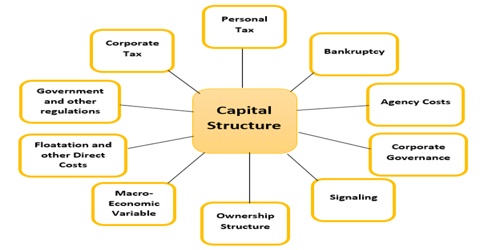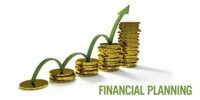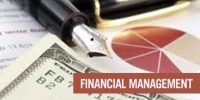Factors affecting the Choice of Capital Structure
Deciding about the capital structure of a firm involves determining the relative proportion of various types of funds. This depends on various factors. For example, debt requires regular servicing. Interest payment and repayment of principal are obligatory on a business. In addition a company planning to raise debt must have sufficient cash to meet the increased outflows because of higher debt. Similarly, important factors which determine the choice of capital structure are as follows:
Cash Flow Position: Size of projected cash flows must be considered before issuing debt. Cash flows must not only cover fixed cash payment obligations but there must be sufficient buffer also. It must be kept in mind that a company has cash payment obligations for (i) normal business operations; (ii) for investment in fixed assets; and (iii) for meeting the debt service commitments i.e., payment of interest and repayment of principal.
Interest Coverage Ratio (ICR): The interest coverage ratio refers to the number of times earnings before interest and taxes of a company covers the interest obligation. This may be calculated as follows: ICR = EBIT/Interest. The higher the ratio, lower is the risk of company failing to meet its interest payment obligations.
Return on Investment (RoI): If the RoI of the company is higher, it can choose to use trading on equity to increase its EPS, i.e., its ability to use debt is greater.
Cost of debt: A firm’s ability to borrow at a lower rate increases its capacity to employ higher debt. Thus, more debt can be used if debt can be raised at a lower rate.
Tax Rate: Since interest is a deductible expense, cost of debt is affected by the tax rate. The firms in our examples are borrowing @ 10%. Since the tax rate is 30%, the after tax cost of debt is only 7%. A higher tax rate, thus, makes debt relatively cheaper and increases its attraction vis-à-vis equity.
Cost of Equity: Stock owners expect a rate of return from the equity which is commensurate with the risk they are assuming. When a company increases debt, the financial risk faced by the equity holders, increases.
Floatation Costs: Process of raising resources also involves some cost. Public issue of shares and debentures requires considerable expenditure. These considerations may also affect the choice between debt and equity and hence the capital structure.
Stock Market Conditions: If the stock markets are bullish, equity shares are more easily sold even at a higher price. Use of equity is often preferred by companies in such a situation. However, during a bearish phase, a company, may find raising of equity capital more difficult and it may opt for debt.
Capital Structure of other Companies: A useful guideline in the capital structure planning is the debt equity ratios of other companies in the same industry. There are usually some industry norms which may help. Care however must be taken that the company does not follow the industry norms blindly.












